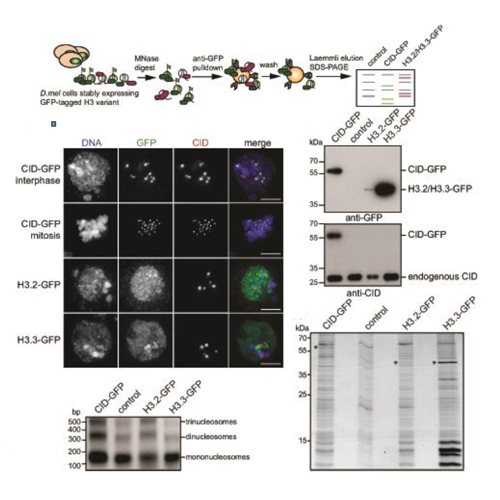Identification of novel Drosophila centromere-associated proteins
14-Jul-2014
PROTEOMICS, 2014, DOI: 10.1002/pmic.201400052, Volume 14, Issue 19, pages 2167–2178 published on 14.07.2014
PROTEOMICS, online article
PROTEOMICS, online article
Centromeres are chromosomal regions crucial for correct chromosome segregation during mitosis and meiosis. They are epigenetically defined by centromeric proteins such as the centromere-specific histone H3-variant centromere protein A (CENP-A). In humans, 16 additional proteins have been described to be constitutively associated with centromeres throughout the cell cycle, known as the constitutive centromere-associated network (CCAN). In contrast, only one additional constitutive centromeric protein is known in Drosophila melanogaster (D.mel), the conserved CCAN member CENP-C. To gain further insights into D.mel centromere composition and biology, we analyzed affinity-purified chromatin prepared from D.mel cell lines expressing green fluorescent protein tagged histone three variants by MS. In addition to already-known centromeric proteins, we identified novel factors that were repeatedly enriched in affinity purification-MS experiments. We analyzed the cellular localization of selected candidates by immunocytochemistry and confirmed localization to the centromere and other genomic regions for ten factors. Furthermore, RNA interference mediated depletion of CG2051, CG14480, and hyperplastic discs, three of our strongest candidates, leads to elevated mitotic defects. Knockdowns of these candidates neither impair the localization of several known kinetochore proteins nor CENP-ACID loading, suggesting their involvement in alternative pathways that contribute to proper centromere function. In summary, we provide a comprehensive analysis of the proteomic composition of Drosophila centromeres.











